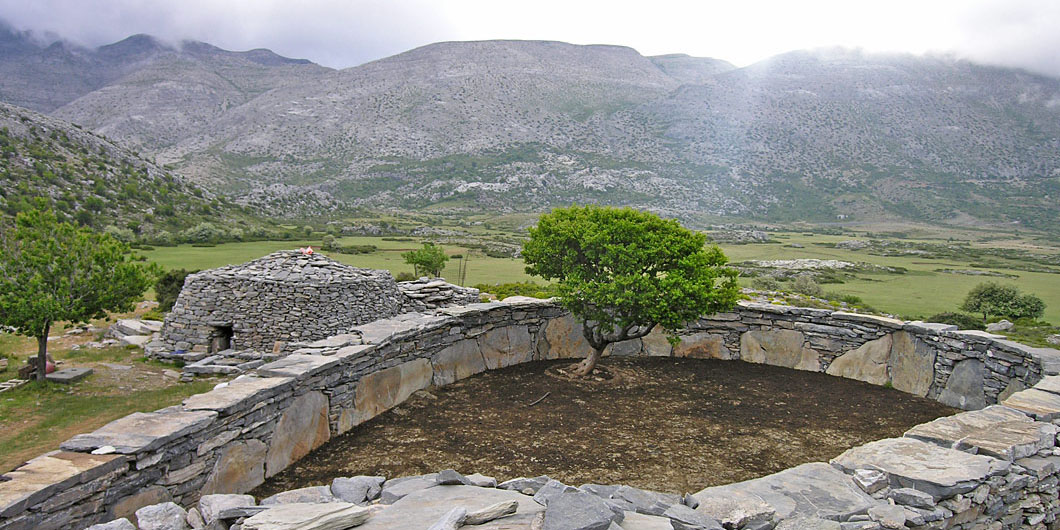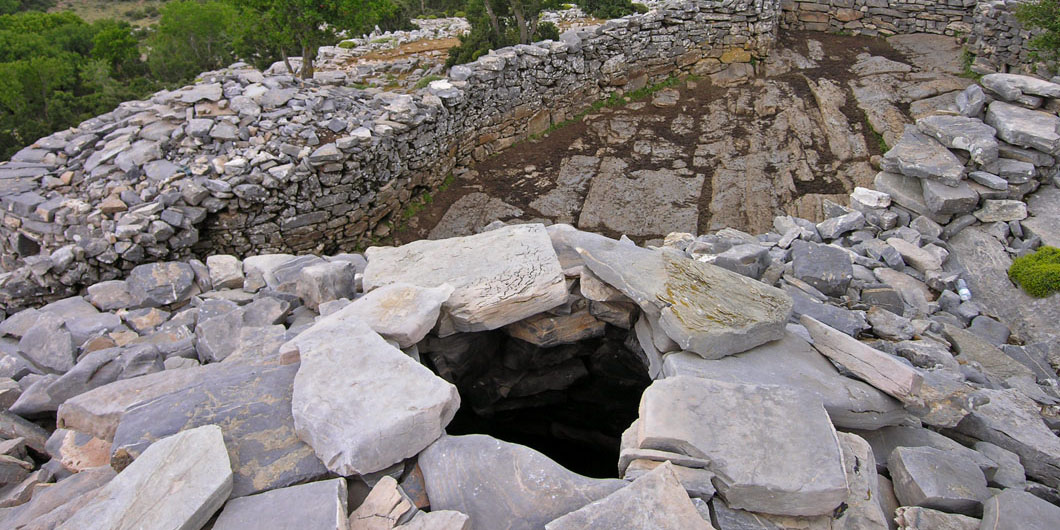Mitata seem to have come about as a result of some ancient construction tradition, and can be seen everywhere in the plateau of Nida.

The name of these ancient, dry-stone constructions derives from the Latin word metatum, which means soldiers’lodging. The word passed on to the Byzantines, meaning a temporary lodging, and it still has, more or less, the same meaning in Crete; mitata are used by shepherds as lodgings and storage rooms for cheese.
A mitato is a circular stone chamber with a corbelled dome; its construction method follows the example of the Minoan vaulted tombs.
No mortar or other connective material is used, only large stones found in the surrounding area. The choice of a building area for a mitato depends on the presence of suitable stones.After all, mitata are made according to the local conditions; they utilize the most suitable materials and methods of construction, in order to withstand the weight of snow in the winter time.

The entrance to a mitato is identical to the entrance to a Minoan vaulted tomb; it is built low (up to 100 cm) out of single large stones, and it usually looks east. The walls can be as thick as 150 cm and the usual inner diameter is 4,5 – 7 m.
The corbelled construction of the dome leaves a circular opening at the centre (approximately 25 cm in diameter), for the light to enter and the smoke to escape (a fire usually burns in the middle of the room). Typically, the dome develops from the height of 100 cm and up.
Mitata are usually clustered in groups of owners of the same family and they are built with some distance between them. They frequently form complexes with certain auxiliary buildings; a mitato is usually complemented by a secondary, almost identical room named tirokeli(= cheese cellar); its difference from the mitato is that its door is lower, and it lacks an opening in the roof.
A sheepfold, which is also made of dry-stone masonry, is essential, and is approximately 1,50 m high.

Besides these three basic areas, in some mitata one may also see a koumos, or kleftokoumos, whereother people’sstrayed or stolen animals are penned, as well as a hut -a sort of a porch- at the entrance of a mitato, where cheese making takes place.
The dating of mitata is no easy task; however, the roughly carved dates on lintels, door posts and other parts of the walls are generally accepted as dates of construction or reconstruction. The oldest date can be seen on the door post of the entrance to the mitato of the priest Michalis Skoulas, in the area of Astriotiko; it reads: 1841.
Mitata are made according to the local conditions; they utilize the most suitable materials and methods of construction, in order to withstand the weight of snow in the winter time.














